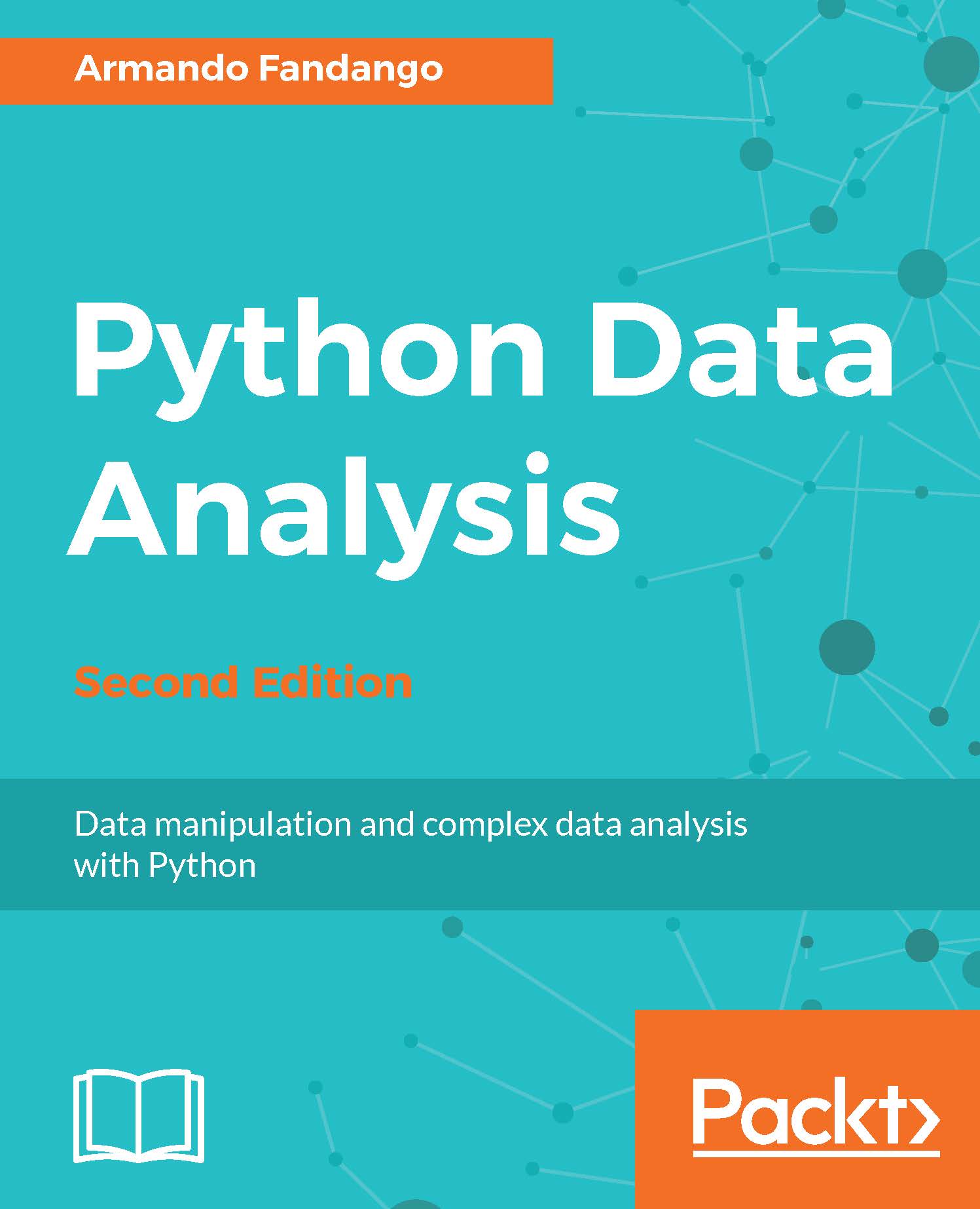Pivot tables
A pivot table, as used in Excel, summarizes data. So far, the data in CSV files that we have seen in this chapter has been in flat files. The pivot table aggregates data from a flat file for certain columns and rows. The aggregating operation can be sum, mean, standard deviations, and so on. We will reuse the data-generating code from ch-03.ipynb. The Pandas API has a top-level pivot_table() function and a corresponding DataFrame method. With the aggfunc parameter, we can specify the aggregation function to, say, use the NumPy sum() function. The cols parameter tells Pandas the column to be aggregated. Create a pivot table on the Food column as follows:
print(pd.pivot_table(df, cols=['Food'], aggfunc=np.sum))
The pivot table we get contains totals for each food item:
Food chocolate icecream soup Number 8.000000 15.000000 19.00000 Price 5.986585 10.440071 13.83338 [2 rows x 3 columns]
The preceding code can be found in ch-03.ipynb in...







































































